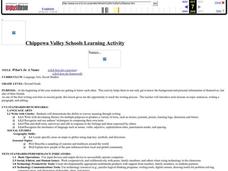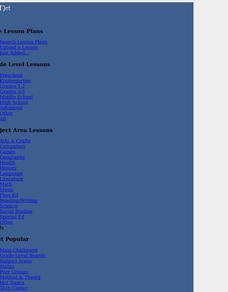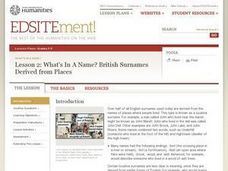Curated OER
New York State Testing Program Math Release questions grade 8
In this algebra and geometry worksheet, students solve seven varying math problems. This worksheet will help prepare students for standardized tests covering algebra and geometry.
Curated OER
Numbers in the News
Students examine numbers used in the real world by reading newspapers. In this number identification instructional activity, students explore popular newspapers and attempt to find numbers in prices, temperatures, dates, sports scores,...
Curated OER
Nunavut - Flag and Coat of Arms
Students examine the symbolism of flags and coats of arms. In this community activity, students discuss the meaning behind the Nunavut flag and coat of arms. Students then design flags and coats of arms that represent their communities.
Curated OER
A Turkey for Thanksgiving - Lesson #2
Second graders investigate realistic fiction, holiday celebrations, making tally charts. For this multi-disciplinary lesson, 2nd graders listen to a story about Thanksgiving and one about the Chinese New Year to develop an understanding...
Curated OER
A River Through Time
Learners explore how construction of a dam on the Gila River affected the lifestyle of Pima Indians. In this social studies lesson, students locate the Gila River and the Coolidge Dam. Learners record dates on a timeline and discuss how...
Curated OER
Problem Solving and the Sports Page
Fourth graders create and solve word problems using the boxscores from the sports section of the newspaper. The role play the sport, define abbreviations used and examine the fundamentals of scoring the sport.
Curated OER
Greek Mythology: All in the Family
Twelfth graders compare/contrast the Greek myth to explain an aspect of nature. They create an explanatory myth about some aspect of nature and design a mythological business card using Microsoft Word.
Curated OER
Signs of Our Times
Students view photographs of the signs and symbols in their local community. As a class, they note the reason for the signs and write the words on the board. Individually, they complete a worksheet in which they match the symbols with...
Curated OER
Read the Directions
In this comprehension worksheet, 5th graders focus on following written directions. Students seek out and circle specific "direction" words in the 11 sentences given.
Curated OER
Systems of Linear Inequalities
In this Algebra I/Algebra II worksheet, students solve systems of linear inequalities by graphing the inequalities on a coordinate plane and determining the location of all ordered pairs that solve the system. The three page worksheet...
Curated OER
Ancient History Cyber-Journalists
Learners describe and assess circumstances surrounding a major historical event from the ancient world by using Internet (and other) resources to research its location, people, and repercussions, & write a newsletter that summarizes...
Curated OER
Cultural Collision
Students examine the culture of the Native Americans. As a class, they discuss the negative impact of the melting pot theory and how different cultures can be preserved today. In pairs, they practice saying Native American words and...
Curated OER
Compound Sentences
Third graders write sentences that have the same topic using a comma and and, as well as practice writing new compound sentences by combining five pairs of sentences on paper. They then work in pairs and take turns writing simple...
Curated OER
Morley [LAM 4]
Students use a bar and beat numbers to identify various terms of vocal music in this organized worksheet. Then they explain the use of texture within the extract. Students also locate an example of suspension and analyze their treatment....
Curated OER
The Peerless Tunes of Busted
In this peerless tunes of Busted worksheet, students identify the answers to fifteen cryptic clues on the lines provided for mastery of recognizing phrases and their meanings.
Curated OER
What's In A Name
Second graders write a paragraph about their findings on what their name represents. In this writing lesson plan, 2nd graders will research their name and why they were named that. They will draw a picture that represents them along with...
Curated OER
Learning to Give
Students learn what it means to give generously. In this giving activity, students give examples of when they have given of themselves. Students complete a service project where they create a gift for preschoolers with whom they can...
Curated OER
College Research Skills: Evaluating Reliable Online Sources
Learners analyze Public Art in preparation for college discussion, research, and writing, and create their own artistic creations. In this art and college prep lesson, students develop an original research question to explore an art...
Curated OER
Texas, Our Texas
Students explore U.S. geography by completing a coloring activity in class. For this Texas history lesson, students utilize the web to locate Texas on a map of the U.S. Students view a PowerPoint presentation which showcases the state...
Curated OER
Found Poems
Students summarize articles found in the newspaper and use key concepts to write a poem. In this reading comprehension and writing lesson plan, students work with a partner to choose a current newspaper article. Key concepts and...
Curated OER
Chanting
Students use pictures and text to gain meaning from written materials by connecting text. message heard, and/or material viewed to prior knowledge and experiences. Finally, students recognize and name upper and lower case letters and...
Curated OER
Dictionary Skills
Second graders use resources such as dictionaries and glossaries correctly to build word meaning and to practice all uses of their references; students also practice alphabetical order while locating information.
Curated OER
Using the Four Main Directions in the Classroom
Students use the four main directions to locate features in the classroom. In this direction lesson, students review the 4 main directions using a world map. Students use a magnetic compass to locate the north wall in their classroom and...
Curated OER
British Surnames Derived from Places
Students use a guiding question in order to provide a context for future research. They develop an understanding of British surnames derived from locations and learn some of the more common names still prevalent today.


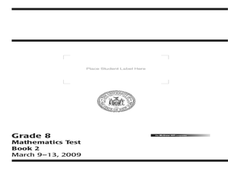

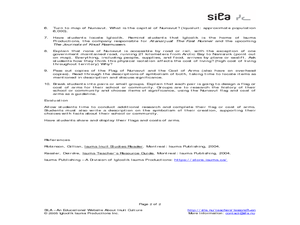










![Morley [LAM 4] Worksheet Morley [LAM 4] Worksheet](http://content.lessonplanet.com/resources/thumbnails/166274/large/cgrmlwnvbnzlcnqymdezmdmzmc0yodixmi03d2vsdziuanbn.jpg?1414266623)

